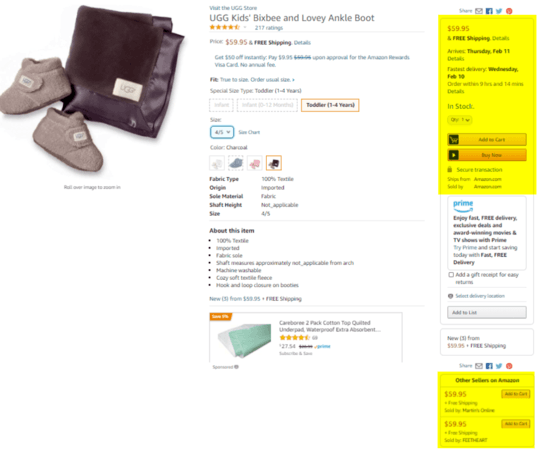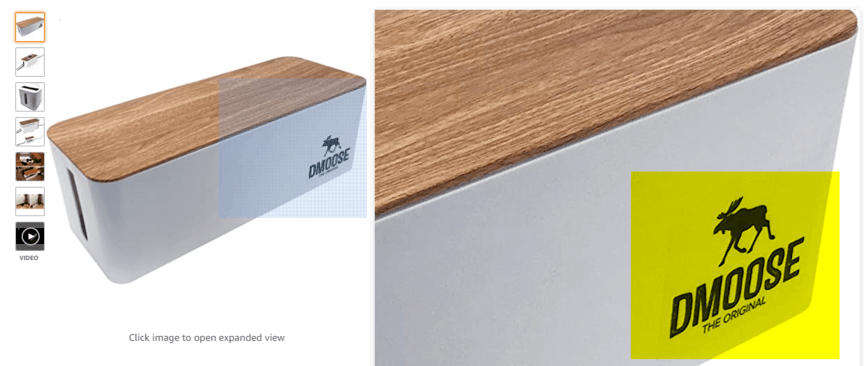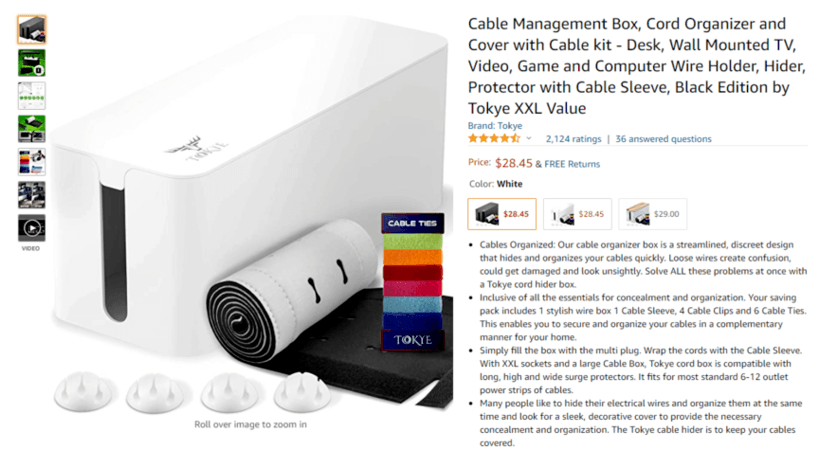What Is Amazon Listing Hijacking? (And How to Protect Your Listings)
“Don’t buy — absolute junk.” That’s the one-star rating Tom woke up to when reviewing one of his company’s best-reviewed products on Amazon. So, what happened? Well, Tom, your Amazon listing got hijacked.
Amazon listing hijacking is when a third-party seller “hijacks” your product listing by offering a counterfeit version of your product, typically at a lower price and quality. Shoppers then purchase this knock-off version, and when the product fails, respond with a negative review on your listing.
So, what can you do? Find out in this post, which answers:
- What is Amazon listing hijacking?
- How are Amazon hijackers different from Amazon resellers?
- How do I know if an Amazon seller hijacked my listing?
- How do I remove hijackers from my Amazon listing?
- How do I prevent Amazon product listing hijacking?
For immediate help with protecting your brand and its Amazon revenues, contact us online or give us a ring at 888-601-5359 to learn more about our Amazon Brand Registry consulting services for small-to-midsized businesses (SMBs).
What is Amazon listing hijacking?
Amazon listing hijacking is when another seller offers a counterfeit version of your product on your listing, which can decrease your sales and number of positive reviews. These knock-off products occupy your product listing’s Buy Box or appear in the “Other Sellers on Amazon” section of your listing.

How are Amazon hijackers different from Amazon resellers?
If you’re looking at your listing and seeing offers in the “Other Sellers on Amazon” section, don’t panic.
Amazon hijackers are not the same as Amazon resellers. Someone that purchases your product and then decides to resell it is not a hijacker — they’re a reseller. The difference is hijackers sell a counterfeit version of your product versus a genuine one, like a reseller.
How do I know if an Amazon seller hijacked my listing?
Your company can spot an Amazon seller that hijacked your listing with the following signs:
- Someone starts selling on your listing that isn’t your business or a licensed reseller
- Someone claims the Buy Box for your product’s listing
- Shoppers begin posting negative or out-of-the-ordinary reviews on your listing
While every business is vulnerable to Amazon hijackers, a few factors can increase your risk, like:
- Running out of inventory
- Limiting branding on products and product packaging
- Monitoring product listings at longer versus shorter intervals, like monthly vs. weekly
- Promoting products with heavily discounted offers
- Skipping the Amazon Brand Registry program
In most cases, an Amazon seller that hijacks your listing will advertise your product at a lower price. For example, if you sell your product for $50, they may offer it for $25. This price difference can often help you spot an Amazon hijacker versus an Amazon reseller.
How to remove hijackers from your Amazon listing
Speed is critical when someone hijacks your Amazon listing. You have to respond fast to minimize your sales losses and potentially negative feedback from shoppers that purchase from the Amazon hijacker.
So, if your listing gets hijacked, follow these tips for how to remove hijackers from your Amazon listing:
Send your Amazon hijacker a cease and desist letter
The quickest action your business can take is with a cease and desist letter.
Get your cease and desist letter over to your Amazon hijacker with these steps:
- Click the Amazon seller’s username (from your product listing) to visit their Amazon page
- Select “Ask a question” from the upper right-hand corner
- Choose “An item for sale”
- Select “Question about a product”
- Enter your cease and desist letter’s text
- Submit your letter
If you don’t have a cease and desist letter drafted, search online for Amazon product listing hijacking templates. These templates will provide you with a framework for notifying the Amazon hijacker. You can also reach out to your company’s lawyers for guidance.
Report your hijacked product to Amazon
In addition to your letter, report the issue to Amazon.
For this tactic, you’ll need to have a registered trademark for your product. This trademark will need to exist in the country where the violation occurred. For example, if the U.S. issued your product trademark, the offense will need to have happened on Amazon.com vs. Amazon.co.uk.
Report the trademark infringement on Amazon by using Amazon’s Report Infringement form.
Purchase your counterfeit product and report it
Your business can also take the step of purchasing the counterfeit product and then reporting it.
For the best results with this strategy for Amazon listing hijacking, purchase the product before taking any other action, like sending a cease and desist letter or submitting a trademark infringement claim. If you complete the test buy after versus before, it’s unlikely the hijacker will fulfill your order.
If you want to take this action, follow these steps:
- Purchase the product from the Amazon hijacker
- Take pictures of the counterfeit product and your product
- Compile a list of differences between the two products
Depending on what you find, you’ll want to submit one of two forms:
- Report Infringement form if the product uses your brand name and logo
- Violation form if the product uses a different brand name under your product listing
With these forms, you’ll want to include the following:
- Hijacking Amazon seller’s username
- Hijacking Amazon seller’s page URL
- ASIN for your product listing
- Product title for your product listing
- Amazon marketplace where the violation occurred
- Order ID for your purchase of the counterfeit item
- Counterfeit and legitimate product images
You’ll also want to explain the following:
- What the Amazon seller is doing, like selling a counterfeit version of your product
- How the Amazon seller’s product is different from your product
- Why the Amazon seller’s behavior will lead to a poor shopping experience
Once you complete these steps, go ahead and submit your form.
Add your product to the Amazon anti-counterfeit programs
Some slower-response tactics for combatting Amazon hijackers include joining the following programs:
- Amazon Transparency Program: This program allows your business to purchase 2D UPC codes, which you will include with each of your product units. Amazon will then verify these codes before shipment happens (whether you use Amazon or a third-party) to stop counterfeits.
- Amazon Project Zero Program: Amazon Brand Registry members can use Project Zero to take advantage of the Amazon Transparency Program, plus unlock the ability to remove counterfeit listings. If you’re already a Project Zero member, you can use this tool to stop Amazon hijackers.
Even if you can’t use these two tactics immediately, it’s worth investing the time to join these programs. That way, you can prevent future Amazon listing hijacking, which will save your business a tremendous amount of time and money.
5 ways to prevent Amazon product listing hijacking
You know how to remove hijackers from your Amazon listing, but how can you prevent it from happening? Your company can use a few tactics to protect your brand, sales, and revenue on the Amazon marketplace.
Five effective tactics for stopping Amazon product listing hijacking include:
1. Enroll your business in Amazon Brand Registry
The Amazon Brand Registry program is one of the most effective ways to avoid Amazon hijackers.
You can apply if you have a registered text- or image-based trademark from one of the following:
- United States
- Brazil
- Canada
- Mexico
- Australia
- India
- Japan
- France
- Germany
- Italy
- Turkey
- Singapore
- Spain
- Netherlands
- Saudi Arabia
- United Kingdom
- Sweden
- European Union
- United Arab Emirates
Your application, which you can start via your Amazon Seller or Vendor account, must include:
- Your brand name
- Your trademark registration number
- Your list of relevant product categories
If you aren’t looking forward to the Amazon Brand Registry application process, you can always invest in Amazon Brand Registry consulting services from WebFX and our award-winning team of 300+ marketing specialists.
2. Add your branding to your product and product packaging
Besides the Amazon Brand Registry program, your company should also brand your product. Add your logo and brand name to your product and product packaging, for example. Make it difficult for Amazon hijackers to copy your product and easy for shoppers to tell your product from a knock-off.

3. Trademark your products
If you haven’t already, trademark your products.
A trademark is one of your best resources when it comes to combating Amazon listing hijacking, so don’t wait to get one. In most cases, U.S. trademark applications and brand registrations take nine to 18 months to fulfill. Once you get yours, remember to enroll in Amazon Brand Registry.
4. Bundle your products
Your company can also use product bundling to decrease the chances of Amazon product listing hijacking. With product bundling, you package multiple products together for shoppers. So, if someone wants to hijack your listing, they need to put more effort into copying your listing.

If you decide to bundle your products, make sure your product bundle makes sense.
For instance, in the example above, the seller’s bundle is a cable management box and cord organizers, which makes sense when thinking about the purchase intent. Do the same with your product bundles —brainstorm why someone wants your product and what else would go well with that purchase.
5. Sell your products on your website
Finally, sell your products on your website, too.
With this strategy for preventing Amazon listing hijacking, you’re not leaving the Amazon marketplace. Instead, you’re providing a reference that Amazon can use to verify your ownership and remove the third-party counterfeit seller.
Some businesses that use this tactic opt to create a product page, but without ecommerce functionality.
If you’re looking to earn more sales and revenue for your company, though, you should make it possible for shoppers to visit your website and purchase your product. That way, people who find your business through search and other channels can become customers.
Even better, you create a new revenue source for your brand.
Protect your listings and revenue with the Amazon Brand Registry
No one wants to lose sales on Amazon, especially to an Amazon hijacker.
That’s why it’s critical to take a proactive approach to monitoring your Amazon listings and enrolling your brand in protective programs like Amazon Brand Registry so that you can prevent Amazon listing hijacking.
If you’re overwhelmed with the paperwork or other tasks, though, WebFX can help.
With our Amazon Brand Registry consulting services, we’ll take care of getting your business enrolled so you can start earning more customers and spending less time on Amazon hijackers. Contact us online or call us at 888-601-5359 to learn more about our Amazon Brand Registry consulting services for SMBs!